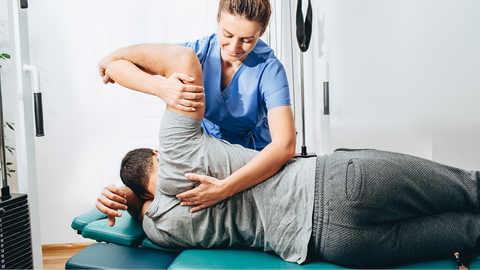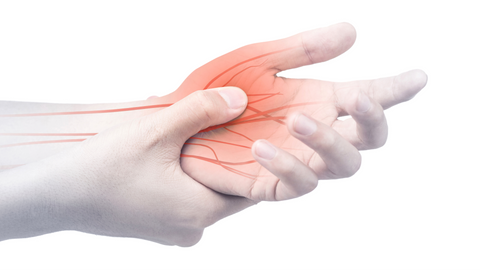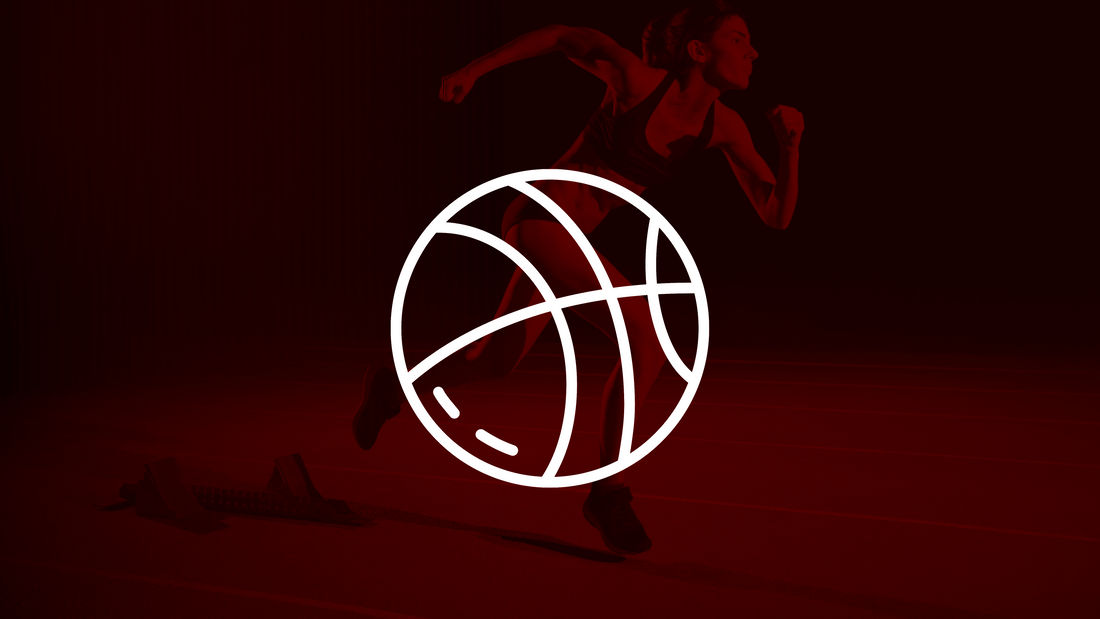
Red light therapy is used by elite and recreational athletes in all sports to enhance performance, accelerate muscle recovery, treat muscle fatigue, and return to play as quickly as possible.
Dozens of peer-reviewed clinical studies support using red light therapy for sports injuries. From runner’s knee to shin splints to lower back pain to tennis elbow as well as meniscus tears. The list goes on.
Whether you’re an elite athlete, a recreational athlete, a coach, or a sports medicine expert, here’s how this natural treatment can be used to treat ‘overactivity’ and acute injuries.
What Is Red Light Therapy (RLT)?
Red light devices use specially calibrated wavelengths of red and/or near-infrared (NIR) light for healing.
Red light therapy is also sometimes referred to as photo biomodulation, low-level light therapy, or simply “red light.”
Some studies and clinical trials have used lasers to deliver light wavelengths. Scientists have determined, however, that light-emitting diode (LED) light devices are just as effective. In order for red light therapy to be effective, the major determining parameters are the wavelength created by the light device and the application of the correct dose.
PlatinumLED is the only unit, currently on the market, that delivers 5 different wavelengths allowing for optimal absorption on the cellular level.
Like all wavelengths, red and NIR wavelengths are part of natural sunlight. Red/NIR light from 630 nanometers (nm) to 850 nm is a range known as the “therapeutic window.” Isolating these beneficial wavelengths harnesses their benefits without side effects.

What Sports Injuries Does Red Light Therapy Treat?
In short, if it hurts, you can treat it with red light therapy.
- Running: Runner’s knee, shin splints, Achilles tendonitis, plantar fasciitis, stress fractures, iliotibial band syndrome, pulled hamstrings, pulled muscles, and hip pain
- Weight training: Shoulder impingement (swimmer’s shoulder), tennis elbow, patellar (knee) injury, meniscus tears, muscle tears, and back sprains and strains
- Cycling: Knee pain, Achilles tendinitis, IT band syndrome, lower back and neck strains, skin abrasions, and blunt trauma (from falls)
- Swimming: Shoulder impingement, shoulder inflammation, rotator cuff tendonitis, neck pain, low back pain, and bicep pain
- Baseball/Softball: Rotator cuff tears, tennis elbow, knee injuries, low back sprains, and muscle sprains and strains
- Tennis/Squash: Tennis elbow, knee injuries, rotator cuff strains, wrist strains, back pain, and Achilles tendon strains
- Football: All of the above, plus concussions (this high-impact sport is notorious for causing injuries to its players)

One large 2016 study focused on assisting fast return-to-play in injured university athletes. This study used 830 nm light to treat 395 varied sports injuries, including sprains, strains, ligament damage, tendonitis, contusions, and soft tissue injuries. After treatment, most participants reported a statistically significant 9.6-day recovery as opposed to the mean anticipated return to play of 19.23 days.
Neck Pain
Neck pain is common among endurance cyclists, swimmers, and participants in contact sports. A study by researchers from Sydney, Australia found that photo biomodulation reduces neck pain immediately after treatment in cases of acute neck pain. In cases of chronic pain, the analgesic effects can last up to 22 weeks.
Achilles Tendonitis
Achilles tendonitis is a debilitating injury that can sideline an athlete for weeks or even months. The effective treatment of tendon injuries with orthopedic medicine and rehabilitation protocol remains a challenge.
Tendons are composed of dense connective tissue with poor vascularity. This creates slower healing timelines in comparison to muscles, ligaments, and bones.
With slow or delayed healing, poor circulation, and increased inflammation following injury, the formation of scar tissue and fibrotic tissue occurs in tendons more often. Lack of flexibility and biomechanical efficiency in tendons makes them more susceptible to reinjury.
Many clinical studies are showing significant physiological improvement in healing with the use of red light therapy, promoting proper modulation of inflammatory markers to stimulate tissue remodeling. In one study, patients with bilateral Achilles tendonitis were treated with 904 nm light, which resulted in significantly decreased inflammation and pain.

How Red Light Therapy Treats Joint Injuries
Swimmer’s shoulder, tennis elbow, runner’s knee, and jumper’s knee are just a few of the painful and debilitating joint injuries that affect athletes of all types and levels.
Joint pain affects about 85 percent of top-level athletes, say Swedish researchers in a 2011 study. Whether this pain is due to high-impact injury or from repetitive motion, daily photo biomodulation helps.
For example, in a large study of 324 participants on lateral epicondylitis (tennis elbow), 82 percent of patients with acute injury and 66 percent of patients with chronic tennis elbow who were treated with red and/or NIR light experienced total pain relief and restored functional ability.
Knee injuries affect many athletes. Numerous studies support using photo biomodulation to treat knee pain from injury or chronic joint degradation. Click on the link to read more about how to use red light treatment to ease joint pain.
Meniscal Tears
Musculoskeletal knee pain is a common and costly problem, and meniscal injuries make up a large proportion of diagnoses. This type of knee injury can be devastating and often requires surgery.
A study by Greek researchers found that red light treatments could be a viable option to produce statistically significant reductions in pain even one year after the injury, whether or not surgery is chosen.
In the past, the standard treatment of meniscus injuries was surgical intervention. However, current treatment interventions are starting to shift focus towards research being conducted on the advancement of cellular regeneration and tissue repair of the meniscus tissue to restore its native function.
Concussions
A concussion can be terrifying – especially when the term “traumatic brain injury” is used. But near-infrared light has been shown to promote healing of an injured brain and skull fractures. Several studies have noted the neuroprotective effects, anti-inflammatory, and regenerative properties of NIR therapy when applied to traumatic brain injury. In a review of pre-clinical studies and clinical trials and research studies, it was found that photobiomodulation may benefit a wide range of brain disorders to include traumatic brain injury.
ACL and MCL Injury
Knees are prone to cartilage degradation over time. They are also vulnerable to connective tissue injuries including the ACL and MCL tears. While surgery is often the best option for ligament injuries, using red light before and after surgery can accelerate healing.
Broken Bones
NIR can assist in healing bone fractures, according to researchers from the Medical College of Wisconsin. In a 2016 study with rats, the researchers used 660 and 830 nm light to accelerate bone fracture healing by stimulating bone formation.
Skin Wounds
“Road rash” is common among cyclists. Skin abrasions can be painful and can leave ugly scars. Red light applied immediately after the injury will accelerate healing and help prevent scar formation.
Muscle and Nerve Damage
Muscle tears and blunt trauma don’t just affect muscle fibers and therefore muscle function; they also damage local nerves. For example, going over the handlebars during a mountain bike ride can result in a muscle contusion in which one part of the muscle functions normally, but other parts remain extremely tender, or completely numb – and this damage can last for years.
Whether it is extremely painful or numb after an injury, it’s hard to gauge the effort a muscle is capable of, or even know if the muscle is being pushed to its limits. This can seriously limit a competitive athlete’s ability to train or perform at their peak.
In addition to supporting muscle injury recovery, light therapy can restore normal nerve functioning in the peripheral nervous system.

Iliotibial (IT) Band Syndrome
The iliotibial band is a strong, thick tendon that runs down the outside of each thigh from the hip bones to the top of the shinbones. When the IT band is inflamed, severe pain radiates between the hip and knees and worsens with activity.
While no studies have been done on the effect of red light on IT band syndrome, this natural treatment has been proven to reduce inflammation and pain, while supporting collagen synthesis and circulation in the area.
This is just a small sampling of injuries that can be treated with photo biomodulation. This versatile natural treatment can also improve performance, and help muscles recover faster from a workout.
How Does Red Light Therapy Help Heal Sports Injuries?
Red and near-infrared light absorbs into the skin and underlying tissue, where it stimulates a chain reaction of positive biological effects that support healing and relieve muscle soreness.
Improved Cellular Energy Production
Red light therapy’s primary mechanism of action is to stimulate energy production within cells.
Specifically, this stimulates mitochondria, which are organelles inside cells that produce adenosine triphosphate (ATP), which is the primary fuel for cells.
Just as you can’t perform at your best physically when you’re exhausted or hungry, your cells can’t perform at their best when they’re depleted.
If cells are depleted, the problem could be mitochondrial dysfunction, or the inability of the mitochondria to produce enough ATP. Depleted cells lead to slower healing – bad news for anyone suffering from an injury.
When red or NIR photons absorb into the body, they excite the light-sensitive chromophores within the mitochondria and stimulate ATP production.
ATP-energized cells are better able to repair and regenerate themselves. Thus, you can expect faster healing from injury, whether the injury heals naturally or is assisted by physical therapy or surgery.

Reduced Chronic Inflammation
Acute inflammation, which represents the body’s mobilization of its healing processes, is a normal part of healing, and typically manifests as redness, pain, or swelling. Temporarily, that’s a good thing.
However, chronic inflammation causes oxidative stress, a prime culprit in mitochondrial dysfunction — which could be a potential cause of nagging injuries.
Dr. Michael Hamblin, a premier researcher of red light, has published numerous research papers, meta analyses, and systematic reviews, including one in which he described the anti-inflammatory effects of red light therapy. In his paper, Hamblin specifically mentions two conditions that plague athletes: knee arthritis and Achilles tendinopathy, for which reducing inflammation is hugely beneficial.
Improved Circulation
Red light therapy stimulates increased blood and lymph flow through its vasodilating effects (widening of blood vessels) and through the formation of new capillaries. Increased circulation delivers more nutrients and oxygen to cells, and more efficiently removes waste products that could interfere with healing.
In a 2017 study, Slovenian researchers observed the effects of 3x/weekly 625, 660, and 850 nm light treatments over eight weeks on diabetic and non-diabetic patients. They found that increased blood flow resulted in faster wound healing among both groups.
Increased Collagen Production
Collagen is a structural protein present throughout the body. Stimulating collagen synthesis can assist in faster recovery for injured muscles, skin wounds, and restoring normal connective tissue and joint functioning.
Type I Collagen
Type I collagen is found in the skin, hair, bones, organs, and connective tissue. Though most clinical trials on the effects of red light on collagen synthesis focus on anti-aging, treatment using longer NIR wavelengths can stimulate the regeneration of Type I collagen. This was confirmed by Brazilian researchers, who during a 2018 study found that 780 nm red light improved collagen organization in muscles and tendons.
Type II Collagen
Type II collagen is found in cartilage. For years, scientists widely believed that cartilage could not be rebuilt. However, research has shown that 850nm NIR light can promote increased spinal cartilage density and reduced pain.
Type III Collagen
Type III collagen is found in the skin, muscles, lungs, blood vessel walls, intestinal walls, and lungs. A clinical study by researchers from São Paulo, Brazil found that 660 nm light treatment can increase Type I and III collagen synthesis and accelerate the regeneration of skeletal muscle tears.
Numerous studies on osteoarthritis conclude that photobiomodulation can prevent further cartilage degradation: that’s amazing news for anyone in the early stages of osteoarthritis (OA), which is considered an “overuse” disorder. Learn more about how red light therapy can ease joint pain from arthritis and help with the loss of mobility from arthritis.
Pain Relief
Can shining a light on sore muscles and joints offer pain relief? Yes, say Australian researchers who found a distinct analgesic effect of 670 nm light in animals with spinal cord injuries.
How to Recover Faster from Sports Injuries with Red Light Therapy
For best results, combine red light therapy with conventional therapies like rest, ice, compression, and elevation (RICE); doctor-supervised anti-inflammatory medications; and where indicated, surgery or PT.
Red light therapy supports healing at the cellular level. It’s not an instant fix (although you may have fast relief from pain), but it can help your body repair and rebuild the damaged area stronger than it was before.

A daily 10- to 20-minute treatment session will offer the best results. This is especially true if treatment continues after symptoms have eased to address any underlying problems that don’t manifest as pain.
Consistent treatment will help with faster recovery from injuries, a key to increased athletic performance.
How Athletes Use the BIOMAX Series for Recovery and Rehabilitation
The key to getting back to play ASAP after injury lies in swift action. Using a combination of red and NIR light delivered simultaneously by a powerful LED light therapy device ensures the most comprehensive treatment at every layer of tissue.
The sooner an athlete starts using light therapy, the sooner he/she will experience pain relief, as the body will respond with increased cellular energy production, improved circulation, reduced inflammation, and increased collagen synthesis.
If surgery is required, photo biomodulation before and after surgery can assist with healing. If the surgery leaves a scar, red light has been shown to help prevent the formation of scar tissue.
How Coaches and Trainers Use Red Light Therapy for Faster Recovery
The key to preventing injury is not just what you do during exercise (biomechanics, intensity, and duration) but what you do before and after exercise. A pre-workout light session can prime the body for action, while a post-workout session of red light therapy can assist with muscle recovery and help prevent injuries.
Coaches incorporate red light therapy into their training regimen to speed up the healing process. Many NFL football teams, as well as amateur athletes, use red light regularly to gain a competitive advantage based on faster recovery and better physical performance.

How Sports Medicine Experts Use Red Light Therapy for Sports Injuries
As mentioned, speed is of the essence when using red light therapy to accelerate healing.
Seeking treatment quickly after an injury can help prevent unnecessary downtime and pain. This applies to both amateur and professional athletes.
A sports medicine expert may use different treatment protocols based on the diagnosis or performance enhancement goals or use several modular panels linked together to increase the coverage area, shortening the treatment time if treatment involves various parts of the body. Treatment options could include deep tissue repair, myofascial release, postural rehabilitation, ligament tears, and restoration of mobility after injury.
Red Light Therapy for Normal Exercise Recovery
Red light therapy can support normal exercise recovery when it’s part of your regular workout routine. The optimal timing of treatments varies, since different effects have been noted whether treatment is given before or after a workout.
You will need:
A Powerful LED Light Therapy Device
A high-quality, medical-grade, high-light-energy-output LED device such as the BIOMAX 900 delivers a combination of five of the most beneficial scientifically validated red/NIR wavelengths.
- Red light absorbs into the skin and near-the-surface tissue: it’s ideal for treating skin, hand, foot, and ankle injuries.
- NIR light absorbs deeper into the body, where it treats large muscle groups, joints, and bones that are beyond the reach of red waves.
Consistent Treatment
A daily 10- to 20-minute session supports existing and emerging cells and effects become more pronounced over time.
Red Light Therapy Solutions
The best BIOMAX devices for athletes include the BIOMAX 600 and the BIOMAX 900. Both of these panels feature a large coverage area, the most powerful light output of any device in their class, and an advanced spectral output of five different red/NIR wavelengths.
You Don’t Have to Be an Elite Athlete to Benefit from Red Light Therapy
At-home red light treatments will support recovery and enhance treatments from a PT or chiropractor, speeding up the process and getting you back in play sooner, no matter what level athlete or desk jockey you are.
When you invest in a high-quality, powerful light therapy device that delivers both red and NIR light, you can use it to improve skin health, eye health, hair regrowth, general pain relief, peripheral neuropathy, skin ulcers, slow-healing wounds, and a great deal more.
The SaunaMAX Pro panels use the same technology as the BIOMAX Series, but are waterproof and heat resistant for in-sauna use. They're perfect for red light therapy enthusiasts who are also home sauna users.
Discover more on the PlatinumLED Learn page for a comprehensive collection of articles on how red light supports optimal health.
And if you’re ready to get back into your sport faster, learn more about the BIOMAX series here.


